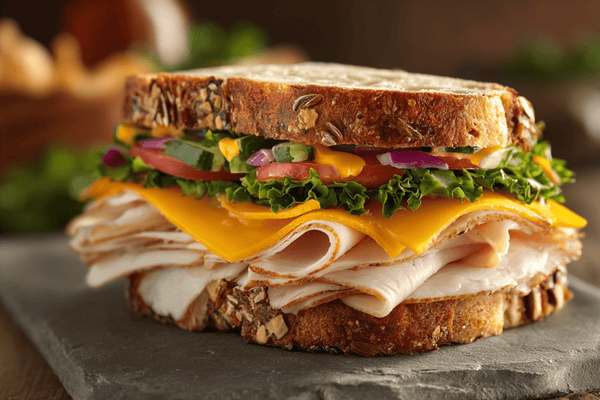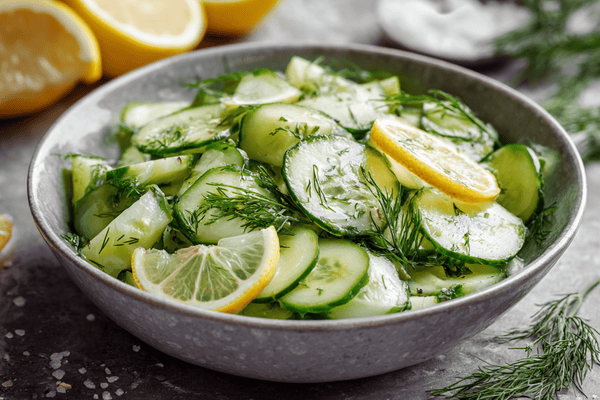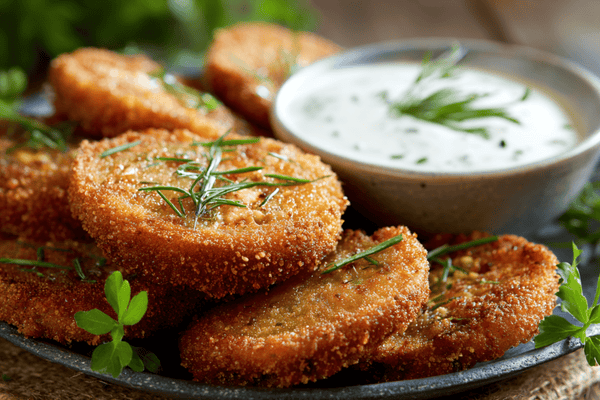
It’s OK to have a certain amount of fat on your brisket because it will definitely improve the flavour. This is especially true when smoking brisket which is one of the things this meat is most commonly used for.
However, you can have too much of a good thing so it’s important to trim any excess fat off the brisket when you’re preparing it. Since brisket is taken from a part of the animal that supports as much as 60% of its weight, there’s a lot of connective tissue and this can make trimming difficult.
But not if you have the right tools! That’s why choosing the best knife for trimming brisket isn’t something you should take lightly. So, if you’re wondering whether to use an electric knife, manual knife, granton blade or specialist knife, look no further. This is a complete guide on choosing the best knife for trimming brisket.
Table of content
- What Is the Best Type of Knife for Trimming Brisket?
- But You Can Also Use...
- Can't I Just Use My Chef's Knife?
- What Do I Need to Think About When Choosing a Knife for Trimming Brisket?
- Material
- Type of Blade
- How Sharp Is the Blade?
- Blase Shape and Flex
- Knife Handle
- Overall Knife Size
- How to Trim Brisket
- Final Thoughts
Which Knife Is Best For Trimming Brisket?
If you’ve been following this blog for a while, you will know that different knives are used for different things. When it comes to slicing brisket, there’s no exception to this rule. If you don’t choose the right knife for the job, you’re going to find it so much trickier.

A trimming knife is an ideal blade for trimming brisket; the clue is in the name, right? These knives are essentially the same as boning knives and have a curved blade that’s typically between five and seven inches in length. However, trimming knives do have a slightly more prominent curve than a boning knife but this is about the only ‘major’ difference.
Trimming knives are incredibly sharp and have a pointed tip that helps you to pierce the meat. They’re brilliant because they work so well with raw meat, making a clean and even cut without you having to put in a lot of effort.
On top of this, the trimming knife can be used for a whole host of other tasks including taking meat off the bone, decorating, slicing, filleting and so many other things. If you regularly work with meat and are looking for something versatile, it’s a blade that will serve you well.
But You Can Also Use...
…a slicing knife or a carving knife for slicing brisket!If you haven’t got or don’t want to invest in a trimming knife then you could make use of some of the other knives in your kitchen. For example, slicing knives and carving knives can be used to trim brisket although it won’t be as easy as when using a trimming knife.
Slicing knives have very flexible blades that are long, thin and have a straight edge. Unlike trimming knives, they don’t have a pointed tip but one that is typically rounded. That said, there are some pointed slicers out there. You also have to consider that these knives are much longer than trimming knives; some can be up to 14 inches. This means that you don’t get the same degree of precision when using them to trim a brisket.
The main purpose of a slicing knife is to cut larger pieces of meat into slices. They’re great at doing this thanks to the Granton edge which ensures consistency and thin slices. However, if you have no other option, they will get that fat off when you need them to.

The carving knife is another common meat knife and most people have one of these in their kitchen whereas they may not have a trimming knife. They’re not all that dissimilar in appearance to a slicing knife but the blade is usually thicker and not as flexible.
One of the distinguishing features of a carving knife is the pointed tip which you use when you need to remove the meat from the bone.
You’d normally use a carving knife to, well…carve meat. They’re ideal for everything from a joint of lamb or beef to cutting through poultry, ham and gammon joints. Of course, it is possible to use a carving knife to trim brisket but the problem is the lack of precision. When using these blades, you’ll find that the cut is not as clean or smooth.
Can't I Just Use My Chef's Knife?

We’d hazard a guess that pretty much everyone reading this guide has a chef’s knife in their kitchen. They’re one of the most common blades because they are so versatile. But as with slicing and carving knives, they’re not actually designed for trimming so if you’re going to use your chef’s knife, you’ll need to be prepared to put in a little more effort.
We’d also highly suggest taking your time and you may be able to achieve similar results to when using a trimming knife.
What Do I Need to Think About Where Choosing a Knife for Trimming Brisket?
If you’ve decided to bite the bullet and invest in a good trimming knife for brisket then there are a few things I would recommend thinking about before you part with any money. For starters, I always suggest buying the best quality you can afford. While some knives can be pretty pricey, I’d sooner fork out a little more and get something that’s going to get the job done and last for many years.Here are some of the things you’re going to want to take into consideration.
Material
One of the first things you should think about when buying any type of knife is the blade material. This can make such a difference in terms of how the knife performs. For trimming knives, you’ll need something that is durable and easy to sharpen because that blade will always need to be sharp to get a precise trim.Stainless steel is one of the most commonly used materials and this is because it’s not only durable but very rust resistant. However, you have to keep in mind that stainless steel is not as easy to sharpen.
If you want something that is going to be simple to sharpen and that will retain its edge amazingly well then I’d recommend going for carbon steel. Of course, there is a downside to this material and that’s that it is prone to rust so will need a little more TLC in terms of maintenance.
Type of Blade

When I talk about the type of blade, I’m referring to the edge, for the most part. There are several types to consider and they all have their pros and cons.
● Straight blades allow you to get an impressively neat and very clean cut. However, it’s not always as easy to start the cut and you’ll notice that working with silver skin can be a bit of a challenge.
● Serrated blades are great when you need to cut through tough meat; that’s why many steak knives feature a serrated blade. You’ll find them easy to use when starting a cut but you have to keep in mind that they tend to tear the meat so you won’t end up with anything near as neat.
● Scalloped blades are somewhere between straight and serrated blades so you’ll get a nice clean cut that isn’t going to tear the meat. That said, you may have problems with tearing and shredding with a scalloped blade if the meat is particularly tender.
● Granton-edged blades are straight but have small dents along the entire length. These are designed to reduce drag and stop food from sticking to the blade while you’re cutting. They’re also ideal if you want to reduce the risk of tearing and you’ll end up with a nice clean cut. We think that this is the best choice when looking at a knife for trimming brisket as you do get the best of everything.
How Sharp Is the Blade?
I’ve touched on the importance of having a sharp knife for trimming brisket. If you don’t, then you won’t get a nice neat cut.When looking at blade sharpness, you’ll want to consider the thickness of the knife. Normally, something thinner with good durability is going to be the best option.
If you try to use a dull blade when trimming brisket, the only thing you’ll find is that you have to exert yourself a lot more. Why bother with all that hassle when you could choose a sharp blade that glides through the meat?
Blade Shape and Flex
When choosing a knife to trim brisket, you don’t want something that’s too flexible. Similarly, you don’t want a very stiff blade so going for something semi-rigid is a good idea.This type of blade will have enough flexibility to bend slightly as you’re trimming which will allow you to work to the shape of the meat. The result of this is a much smoother and cleaner cut. However, if there is too much flex, this will limit how well you can control the blade.
Look at the tip of your trimming knife; you’ll want to see a slight curve that runs from the handle to the tip. The reason that this is such an important feature for these types of knives is that it allows for more leverage when cutting. You’ll also find that the knife cuts under the fat without interfering with the actual meat; which means less wastage.
Knife Handle

In the past, I have often talked about the importance of choosing a knife with a good-quality handle. It really can make all the difference in how the knife performs and how comfortable it is to use.
One of the first things to think about when looking at the knife handle is what it’s made of. There are a ton of choices including wood, metal, plastic, and even rubber. Most people would agree that plastic offers the best durability but I don't think it looks as nice. Wood, on the other hand, looks amazing but it will require more maintenance.
Where comfort and control are concerned, you’ll also need to think about the shape of the knife handle. It’s not really a question of which shape is best as much of this comes down to your personal preference.
That said, while you might like the look of a certain shape, this doesn’t mean it’s going to be comfortable to use. We’d recommend looking for something that’s got an excellent grip and that feels firm in the hand. This will ensure that you have total control and that you don’t end up with wrist fatigue.
On top of this, having a handle with a good grip will ensure that the knife doesn’t slip during use which could result in a nasty cut or injury. You also have to keep in mind that brisket is a very fatty cut of meat and once this gets onto the handle, it can make it slippery. Having a textured surface will reduce the risk of accidents.
Another feature that can improve the safety of a knife is the bolster. When choosing a trimming knife for brisket, We’d recommend looking for something with a sufficient bolster as this will prevent your hand from slipping down onto the blade.
It’s a good idea to try out different knives where possible and just get a feel for how they are in your hands. The size of your hand will impact the size of the knife you can use. If you have very small hands and try to use a huge knife, you’re going to struggle.
When looking at the handle, we’d also encourage you to think about its construction. You don’t want something flimsy that lacks durability. Knives with a full tang will provide you with something more robust so I’d always opt for this over a partial tang.
Overall Knife Size
As we mentioned earlier, you don’t want to choose a blade that’s too big (or too small) for your hands. However, certain jobs, especially those that require intricacy, like trimming brisket, require a certain size of the knife.It’s important to look at the knife as a whole. Many people, when considering size, only think about the blade and while this is important, it’s not the only thing that matters. You’ll need to think about the size of the briskets you normally cut and how much meat you’re wanting to cut at once.
If you’re going to be trimming a lot of briskets in one session then I’d recommend choosing a larger knife. This is because you’ll get a much cleaner cut and you’ll find the knife a lot easier to handle. Normally, you’ll want something that’s at least six inches but for more demanding work, you could easily double this. Again, it helps to consider your hand size as this will impact what feels most comfortable to you.
As well as length, you’ll want to think about the weight of the blade. The most suitable weight will again be different between users so it’s worth trying different knives out to get a feel for them. When trimming, much of it comes down to personal choice as well with some people liking a lightweight blade while others prefer something a little heavier.
The problem with a lightweight knife is that it lacks control but if you use something too heavy, this can be tiring if you’re working for longer periods. Find something in the middle for the most comfortable performance.
How to Trim Brisket
When it comes to trimming brisket, your main goal is to get as close to the meat protein as possible. Also, you want to make sure that you aren’t taking away all of the fat as there’s a lot of flavour in there. Most experts recommend that you leave around one-eighth of an inch of fat.
When cutting brisket, there are two main parts; removing the fat before you cook the meat and then slicing it for serving.
When trimming, it’s critical to get the right cut as this allows you to achieve the best bark. We’d recommend using your trimming knife to remove the thickest pieces of fat. You’ll find these along the top of the meat.
You will likely need to make several cuts to get rid of it all and that’s OK; make as many as you need. The key is consistency so take your time to make sure that you get an even layer over the entire top of the piece of meat. And don’t forget the ⅛ rule!
We’ve already covered which is the best knife for trimming brisket but if you don’t have a trimming knife, we’d urge you to consider that, while you can use other types of knives, they won’t do the job as well. If you use a carving knife, for example, you may find that you’re left with ragged edges not to mention, it won’t be as easy to cut.
That said, as long as you use the right cutting motion, you should be able to make things easier. You want to make use of the entire length of the knife and make smooth slicing motions.
Final Thoughts
Brisket can be one of the juiciest, tastiest cuts of meat there is provided it is prepared correctly. There’s a lot of fat on brisket and while you want to keep some to retain the flavour, most of it will need to be trimmed.For this, you’re going to want a trimming knife. These are very similar in design to a boning knife and offer a practical and easy way to effortlessly trim away fat without tearing the meat. Electric knives do not give enough control.
You’re going to want to think about a few things such as knife material, handle size, blade length and other aspects to choose the best trimming knife for brisket.




